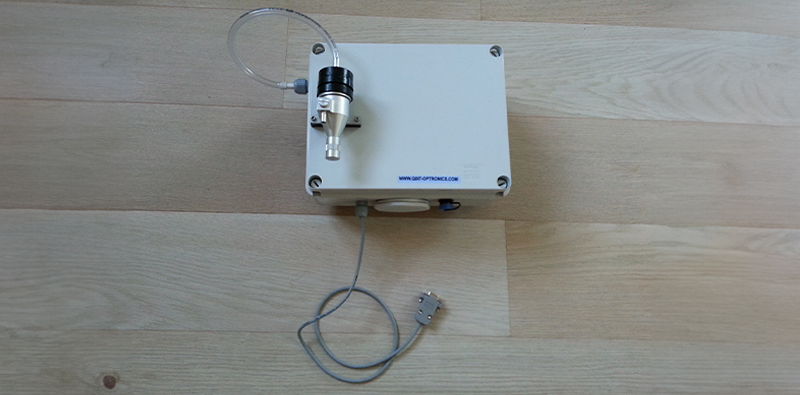
LCT – 12
PRODUCT HIGHLIGHTS
Real-time measurement of PM concentrations (PM2.5 or PM10)
Automatic optical cell cleaning and recalibration system
Multi-year operation
Low running costs
Easy to integrate in environmental monitoring networks
Method of Operation
Qbit’s LCT-12N Particulate Matter (PM) Meter is an instrument based on “Laser Scattering” measurement, that is, the measurement of light scattered by particulate matter in the air sample introduced into an optical interaction cell. This type of measurement allows obtaining a real-time value, i.e., a continuous measurement of the particulate content in air. However, this measurement is not a direct measure of the mass of particulate matter in the air. The amount of light scattered by particulate matter is, in fact, proportional to its density in the air for the same physicochemical properties and particle size distribution. Conversion of the optical data must be carried over to a mass measurement of particulate matter through a calibration process. The mass value of PM is therefore the more accurate the more the sample used in the calibration process is similar to that at the site and time of measurement.
Operating Specifications
| Quantity | Value | Unit | Notes |
|---|---|---|---|
| Power supply | 12 (o 24) | Vdc | |
| Average absorption | <5 | W | With pump flow set at 2.2 l/min |
| Maximum Peak Absorption | 15 | W | In calibration and with pump flow 3 l/min |
| Pump flow | 0-3 | l/min | Adjustable by firmware (FW) |
| Measurement time | 1-120 | sec | Adjustable by FW |
| Calibration interval | 1-600 | min | Adjustable by FW |
Resolution and Accuracy of Measurement Signals:
| Quantity | Value | Unit | Notes |
|---|---|---|---|
| PM signal resolution | 1/4096 | Full Scale | (1) |
| PM signal accuracy | <1% | Full Scale | (2) Over the entire measuring time range |
| Maximum PM range | 10000 | μg/m3 | (3) Factory settable |
| Temperature resolution | 0.01 | °C | (4) |
| Temperature accuracy | 0.3 | °C | (4) |
| Pressure resolution | 0.01 | kPa | (4) |
| Pressure accuracy | 0.5 | kPa | (4) |
| Rel. Humidity resolution | 0.04 | % | (4) |
| Rel. Humidity accuracy | +/- 2 | % | (4) For Humidity values between 20% and 80% |
- As indicated at the beginning of this data sheet, the resolution and accuracy data of the PM measurement are relative to the optical signal produced by the particulate sample. The similar specifications on the mass value of particulate matter are derived from a calibration process that is sensitive to the type of sample tested (carbon dust, such as those typically found in winter due to heating systems result in a higher conversion coefficient than silica dust more typical of summer measurements). The accuracy of the mass data, at a specific site and in a specific time period, must therefore be evaluated by comparison over an interval of several hours with a gravimetric measuring system (Primary Method).
- The accuracy of the measurement is greater the longer the measurement interval. For measurements longer than 10 seconds, accuracy can reach levels better than 1 part in 1000.
- The standard range set at the Factory corresponds to a concentration of 1500 μg/m3 at Full Scale. Which produces for what is stated in (2) a measurement sensitivity better than 2 μg/m3, for measurement intervals of 10 seconds or greater.
- Optional
Dimensions
External dimensions (without Cyclone) 25 cm x 20 cm x 10 cm
Weight about 2 kg

